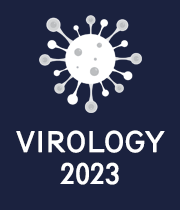Title : Evolutionary and phenotypic characterization of reassortants of infectious bursal disease virus (IBDV) circulating in Europe
Abstract:
Infectious bursal disease virus (IBDV) is a bi-segmented dsRNA virus that causes worldwide serious economic losses in poultry production. Recently, the emergence and circulation of novel reassortants of IBDV (assigned to A3B4 genotype) containing the segment A from very virulent strains and segment B from an unidentified source, was reported in Europe. Interestingly, these strains competed with the well-established very virulent IBDV, becoming prevalent in Poland and disseminating to other countries in Europe. In the present study, we analysed the evolution and dynamics of infection under in vivo conditions compared to a very virulent strain.
As shown by the temporal analysis, tMRCA for segment A and B of the A3B4 IBDV genotype, were determined around 1988 (95% HDP: from 1984 to 1992) and 1981 (95% HDP from 1978 to 1992), respectively, indicating a likely reassortment time in the late 1980s that coincides with the first detected field strain in 1992. Moreover, the estimated evolutionary rates for this lineage is considerably high for both segments, suggesting that these strains are in a fast-rate evolutionary process. In turn, from the population dynamics reconstruction, it was inferred that the reassortants has increased its genetic diversity that could be indicative that the new genetic constellation enhance their genetic fitness. The infection of five-week old SPF chickens with the novel reassortant strain (genotype A3B4) and very virulent isolate (genotype A3B2) caused clinical symptoms (depression, ruffled feathers and diarrhoea), gross lesions (enlarged and mottled spleens with necrotic foci, swollen kidneys or congested duodenum) and mortality (rA3B4: 20% and A3B2: 50%). Moreover, both strains replicated in examined lymphoid and non-lymphoid tissues with comparable efficiency, while a significant higher RNA load of vvIBDV was observed at 2 and 7 dpi in bursa, and at 7 dpi in spleen, cecal tonsils and proventriculus. In turn, birds infected with the reassortant strain showed severe and precocious bursa atrophy at 4 dpi, while in birds infected with vvIBDV from 7 dpi onwards. Moreover, reduced weight gains of infected birds from 4 and 7 dpi was observed in the reassortant and very virulent group, respectively.
The results obtained confirm that the acquired viral polymerase (encoded by segment B) of A3B4 IBDV firstly provides greater diversity of this genetic lineage, and secondly does not adversely affect the ability to multiply in the host. These strains are fuelled by efficient replication in lymphoid and non-lymphoid organs, but due to lower mortality rate, the presence of virus may be less pronounced and consequently facilitate their spread. Moreover, the resulting immunosuppression and poor performance indicates that these strains pose a threat for poultry production.
What will audience learn from your presentation?
The results presented here provide an interesting example of the evolution of pathogenic viruses. Reassortment is an important mechanism that triggers viral evolution among RNA viruses with segmented genome and can lead to host switching, altered virulence properties and enhanced transmissibility, thus consequently changes the epidemiological situation. As demonstrated by computational and in vivo studies, the population of A3B4 genetic lineage of infectious bursal disease virus has acquired a number of adaptive features, such as an increased fitness landscape in the viral quasispecies composition and better adaptability to dissimilar environmental conditions, and consequently becoming the dominant population. The reassortant strains also exhibited a decreased virulence, which also can facilitate their spreading.


